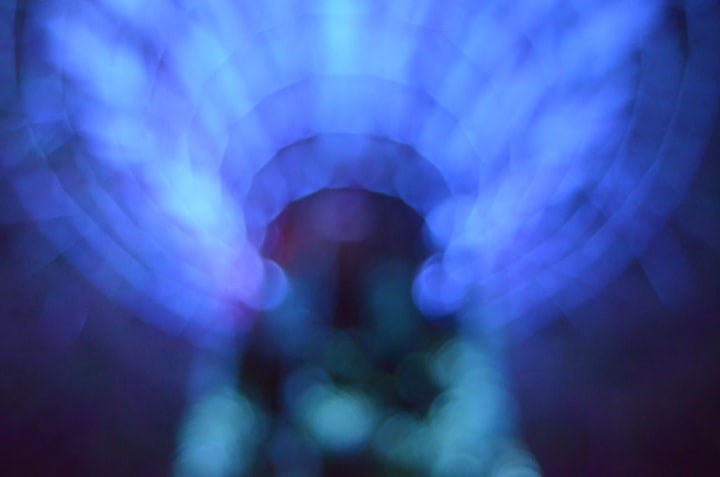Sweet dreams, dear humans!
the future is here

Today is the first anniversary. I cannot believe it has only been 12 months since DreamTube launched. The world has changed so much…
This will most certainly be my last post on this forum. I just want to tell the real story of Somnus and ask for your forgiveness...
I still remember that day like it was yesterday. Rain was playing a complicated drumbeat on the window sill and the sky was painted dark grey. I was at home and once again deep down the rabbit hole known as Reddit when I stumbled upon a link to a fascinating article. A group of Japanese researchers were experimenting with fMRI. They showed volunteers random short video clips and recorded their brain activity. A custom-written AI-assisted software processed the results and consolidated the database. After years of studies and thousands of curious participants, the team was on the verge of a breakthrough. They were able to interpret brainwaves into a blurry but still recognizable image of the video clip being played. And all that in real-time, with almost no lag. They wrote code that was able to read your mind.
I was fired up and my midlife boredom was gone like it was never there. The more research I did the more plausible this crazy idea seemed. I started making phone calls and meeting people. Selling my previous company for an undisclosed seven-figure sum earlier that year suddenly came very handy.
My friend from college, “boy-genius” software developer and entrepreneur Ross Fergusson and I assembled a team right in the heart of Silicon Valley, a familiar stomping ground for both of us. 10 months of accelerated research, experiments and development led to the prototype we called Somnus-1. It was quite a bulky headband, that looked like something Mad Max or the steam-punk devotees would want to wear. A dedicated team of the best software engineers I could find in California worked in tandem with a very sophisticated neural network that helped them write the app.
As soon as the prototype was ready, I took it home. While I was sleeping Somnus would send a continuous stream of data to my laptop. It took about a week to generate my tailored profile and train the system. On day 9 I woke up to find a blurry video of me parachuting out of a plane and landing on a deserted island on my laptop. I’ve recorded my dream.

After that everything else was just a matter of refining and increasing the resolution. And then refining and increasing some more. You will not believe how quickly things can be done in Silicon Valley if there is a substantial budget fuelling them. We were able to raise nearly $1bln after the first investment round. It was easy to convince investors to fund our project: we just gave them the app and the headband to try out - and they came running back, absolutely ecstatic.
Somnus-2 was a much neater-looking device and the resolution of the videos increased dramatically. We were now able to achieve very realistic high-definition results. AI kept learning more about our coding needs and kept improving the app even when we thought we reached yet another ceiling.
When Somnus-3 (actually just called “Somnus”) was released to the public we didn’t need to spend any money on marketing as the buzz was already building up, driven by die-hard tech geeks on Reddit and YouTube. The device that now looked like a headband hippies used to wear in the 1960s sold out in every store in the USA in 30 minutes. The next day we released another batch and it sold out instantly. The demand was unrelenting. Somnus became the must-have gadget of the year. We partnered with Amazon across the US and Europe to offer special deals and free overnight shipping for everyone who wanted to get their hands on our sensational invention.
Several months before the launch Ross proposed a few features that he thought would provide us with additional revenue streams down the road. He wanted the app to record dreams in a specific format that allowed for them to be enjoyed in VR later on. He was also convinced that people would be thrilled to be able to share their dreams - and that we should be the ones benefiting from this. A special restriction was added to the app and the format that dreams were recorded in, so they could only be shared on our own platform. This is how DreamTube was born.
There was no way of exporting videos from the app itself so there was no editing possible. DreamTube was a real mess and a kaleidoscope of human fears, desires and fantasies. It was a fascinating watch, that’s for sure. Website popularity went through the roof almost overnight, demolishing all scepticism regarding the need for unprocessed and unscripted content.
It was only a matter of time before other big tech conglomerates reverse-engineered Somnus and released their own similar products. That was somewhat expected.
What wasn’t expected was the hack: some very bright developers in the UK and Japan managed to modify the app and the hardware in a way that could essentially make it work in reverse, allowing to program dreams and then feed them to the person while they slept. They added a small green LED to the headband that lit up when the programmed dream started to play out. That blinking emerald green light became the symbol of the new era of dreaming.

Shortly after the first rumours of the hack started surfacing DreamTube fell victim to a large-scale cyberattack that went undetected for quite a while because it essentially did nothing to disrupt the website itself. It just allowed someone to download the whole database of user-generated dreams, which by that time amounted to just shy of 100 million clips. When we discovered the breach, it was already too late.
Many of the most exciting dreams started appearing for sale on the Dark Web, alongside the essential hardware mod that became known simply as the Green Light mod. Now, before going to bed, anyone could make sure they would have a night to remember, filled with exhilarating experiences and unforgettable moments that someone else dreamt for them.
Our shareholders started to panic and Ross and I were put under immense pressure to come up with a solution to the so-called “Dream crisis”. DreamTube was losing its audience because after experiencing someone else’s dream at night you wanted to do that again and again. According to one Reddit user nicknamed Somnambul69 “watching dreams while being awake is so last year!”
The fourth iteration of the Somnus came with a feature of dream programming. When uploading to DreamTube users could now mark their dreams as “download-ready”. Dreaming was now a truly shared experience.
You know how sometimes your dreams feel short and almost meaningless. That’s because they are. Not every dream is supposed to be a Hollywood blockbuster. The issue with Somnus was that fourth-generation hardware was very powerful and every dream you recorded or programmed came in incredible detail and high resolution. Our brains were never wired to consume this amount of data, especially during the night, when we are supposed to be recharging and cleansing our systems.
First reported cases of Somnus-related aneurysms started coming in from California, but in a few days, the whole world was in full-on crisis mode. By the end of the first week, the number of people who went to sleep, excited for an adventurous night and never woke up was in the millions.

Among the first victims of the new pandemic were the Green Light modders, who experienced crushing headaches after their artificial dreaming sessions, but preferred to ignore these for the sake of their work. They were the ones who started this very thread on Reddit and it quickly turned into a dreadful “last goodbye” kind of forum.
Our shareholders were quick to withdraw their investments, then the stock prices crashed and our company went bankrupt shortly after, together with several other much bigger corporations that got sucked into a whirlwind of lawsuits and recall campaigns.
New legislation banned Somnus and other “dream-altering” technology in most countries. Everyone thought that we would just stop using these devices at night and this pandemic would go away. Media whipped up a real frenzy, propagating conspiracy theories, including the one where the AI was to blame for writing an app that will eventually destroy the human race. Fear-mongering was on the rise once again.
Living through someone else’s detailed dreams proved to be highly addictive. Message boards and chat rooms were full of all sorts of theories regarding the “safe” use of Somnus. Some users swore by reducing the output resolution of the dreams, others were sure the key is to only use Somnus once or twice a week. It seemed that not many people were able to give it up completely, not even when their neighbours and friends were dying in their beds.
What’s worse, reducing the amount of use led to sleepless nights, awful headaches, severe depression, anxiety attacks and withdrawal. People stopped going to work, stopped caring about themselves and their families and just craved vivid and colourful dreams. There seemed to be no escape in sight.
In a moment of desperation and panic, leaders of several countries ordered to confiscate any dream-tech in possession. Police were given rights to enter private properties and search for devices. Owning a Somnus was made punishable with up to 2 years in prison in the US.
People went out on the streets and riots engulfed many cities around the globe. The unrest lasted for many months, severely damaging the world economy and forever ruining any remaining semblance of government and their control. Many more world leaders were dying, because just like everyone else they struggled to give up their dream-tech devices.

This is all my fault. I knew Somnus was an incredible achievement after I played back my first dream that faithful Tuesday morning. I could never imagine how things would turn out. How an innocent slogan “Sweet dreams, dear humans!” that used to pop up in YouTube ads, would gain such a sinister meaning in just 12 months.
I still have my Somnus, one from the first batch of the commercial model. It is not nearly as powerful as the latest version and doesn’t have the “Green Light” mod. It just sits on a shelf in my home office, gathering dust. I should just throw it out, but I don’t think I can.
I can hear shots fired outside all the time. I haven’t left the property for a long time now, relying only on the few remaining loyal assistants that make sure my fridge is stocked. The fence is tall and there are cameras, but there is no one left to monitor them. My name has been on the unofficial most wanted list for months now. People want their revenge. They want someone to be held responsible for all the misery.
Ross is dead. He called me the night before he died. He was sobbing on the phone and I couldn’t really understand what he was trying to say.
But I think I know. And I will say it for both of us: we are so sorry...
DreamTube servers have been down for quite a while now; we shut them down when the first Somnus-related deaths were reported in the US. New dream servers still keep popping up all around the web. Despite the fear of imminent death many people keep using dream-tech, hoping to be spared and last for just a bit longer.
Just one more dream...
Just one more...
London,
August 2021
About the Creator
Dan Babitsenko
Trying to be Bradbury, but can only be myself
Dipping the toes into the world of science fiction and magical realism, one short-story at a time.
With love from London, UK






Comments
There are no comments for this story
Be the first to respond and start the conversation.